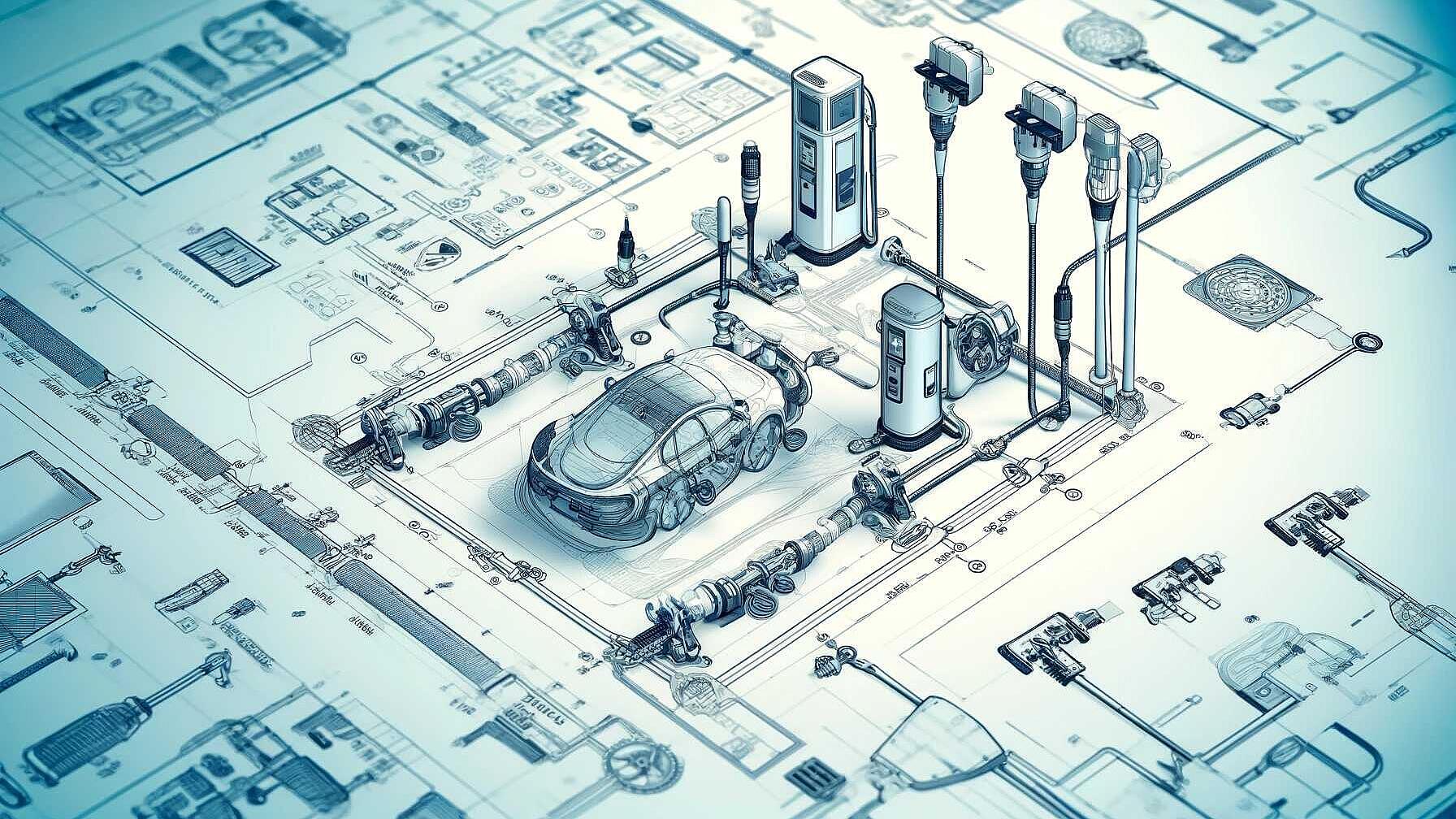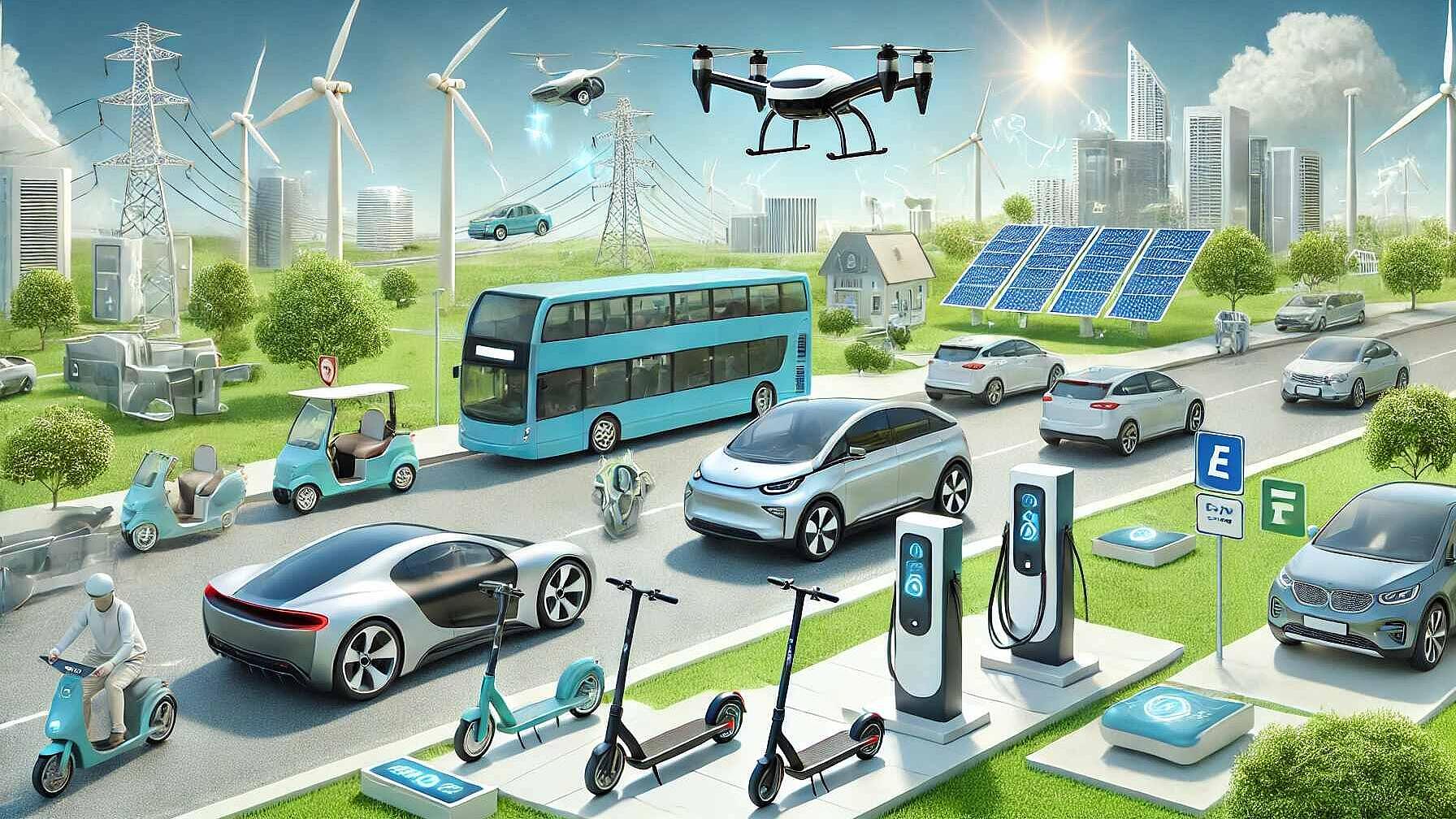 Energy Infrastructure
Energy InfrastructurePráticas Comerciais
Transforming the Grid: Electric Vehicles as Key Players in the Energy Landscape
Resumo
The "Solution Booklet: Electric Vehicles and the Grid," acknowledges the growth of electric vehicles (EVs) in Europe, reaching around 4.7 million by 2023, and the corresponding need for comprehensive charging infrastructure development. EVs offer uni-directional (V1G) and bi-directional (V2G) charging, the latter of which can aid in grid optimization. Cities are pivotal in integrating EV infrastructure, necessitating multi-step strategies that analyze current contexts, forecast future needs, and create tailored action plans.
Technical requirements for EV infrastructure include AC to DC conversion adapters for charging, with more complex systems for fast and V2G chargers to allow bi-directional energy flow. Societal adoption hinges on overcoming misinformation, maintaining user control over charging patterns, and addressing range anxiety through reliable infrastructure and clear communication.
Pilot projects, such as the OVO Energy V2G trial in the UK and Amsterdam's smart charging, illustrate the benefits of V2G for grid management and user financial incentives. Policy support and standardization are provided by initiatives like the European Commission's Sustainable Transport Forum and the EU Urban Mobility Observatory, focusing on interoperable infrastructure and facilitating EV integration.
Local and national initiatives support EV deployment, and evolving business models emphasize economic viability through dynamic tariffs and local flexibility markets. The Parker project in Denmark showcases the economic benefits of V2G for aggregators and fleet operators.
Overall, the booklet emphasizes the transformative role of EV integration into the grid, advocating for strategic urban planning, robust charging infrastructure, policy support, and business innovation to secure a more sustainable energy future.
Artigo aberto completo
Transforming the Grid: Electric Vehicles as Key Players in the Energy Landscape
Electric Vehicles and Their Synergy with the Grid
The integration of electric vehicles (EVs) into the energy grid represents a pivotal shift towards more sustainable and efficient energy use. This summary highlights key insights from the "Solution Booklet: Electric Vehicles and the Grid" produced by the Smart Cities Marketplace under the European Commission’s Directorate-General for Energy.
The Evolution and Potential of EVs
Electric vehicles have significantly penetrated the European market, with the number of electric passenger cars rising to around 4.7 million by 2023. This rapid increase underscores the necessity for a robust charging infrastructure. EVs offer two main charging paradigms: uni-directional (V1G) for simple charging, and bi-directional (V2G) which enables vehicles to both charge and discharge, providing additional grid support. While V1G technology is prevalent, V2G is still emerging but holds immense potential for grid optimization.
Strategic Implementation of EV Charging Infrastructure
City Context and Planning
Cities play a crucial role in developing EV charging infrastructure. Strategic plans must be rooted in the current context, anticipating future needs, and aligned with the cities' Sustainable Urban Mobility Plans (SUMPs). This planning involves a multi-step approach:
- Current Context Analysis: Evaluate existing electric mobility indicators, such as the number of EVs, public infrastructure, and energy demand.
- Future Needs Identification: Forecast the growth and evolving requirements of EV infrastructure.
- Vision Formulation: Develop a strategic vision for transitioning to electric mobility.
- Action Plan Development: Outline concrete actions, including economic incentives and policy changes.
- Regular Review: Continually assess and adjust the strategic plan to ensure alignment with real-world developments and challenges.
Technical Specifications
Developing EV infrastructure involves sophisticated hardware and software components. EVs typically require adapters to convert alternating current (AC) from the grid to direct current (DC) for battery charging. Fast chargers and V2G setups demand more complex infrastructure, including bi-directional energy flow capabilities.
Societal and User Aspects
Overcoming Barriers and Building Trust
The successful adoption of smart charging and V2G technologies depends on addressing societal and user concerns:
- Information and Trust: Lack of knowledge and misinformation about EV benefits and technologies can create distrust. Public education and transparent information dissemination are vital.
- Third-Party Access: Users often worry about losing control over their vehicles' charging patterns. Ensuring robust privacy and security measures can alleviate these concerns.
- Range Anxiety: The fear of insufficient vehicle range can deter users. Reliable charging infrastructure and clear communication about EV capabilities are essential.
Innovative Solutions and Case Studies
Several pilot projects demonstrate the viability and benefits of smart charging and V2G technologies. For instance, the OVO Energy V2G trial in the UK showed how V2G can reduce grid burdens and provide financial benefits to users. Similarly, Amsterdam's smart charging initiative optimized grid load management and improved charging efficiency.
Governance and Regulation
Policy Support and Standardization
The European Commission supports the deployment of smart charging and V2G technologies through platforms like the Sustainable Transport Forum and the EU Urban Mobility Observatory. Effective governance involves:
- Regulatory Frameworks: Ensuring that national and EU policies facilitate the integration of EV technologies.
- Standardization: Developing interoperable standards for charging infrastructure to enhance user experience and investment optimization.
Local and National Initiatives
Local authorities can significantly influence the adoption of EV technologies by supporting pilot projects, providing incentives, and aligning urban planning with mobility goals. National policies must also evolve to accommodate new technologies and market dynamics.
Business Models and Finance
Economic Viability and Market Integration
Developing sustainable business models for EV integration involves:
- Dynamic Tariffs: Implementing time-of-use and real-time pricing to align charging with grid costs and enhance flexibility.
- Local Flexibility Markets: Allowing EVs to participate in energy markets, providing services like peak shaving and frequency regulation.
Case Studies
The Parker project in Denmark exemplifies how V2G technology can provide valuable grid services, demonstrating the economic incentives for aggregators and fleet operators.
In conclusion, integrating electric vehicles into the grid presents a transformative opportunity for enhancing energy efficiency and sustainability. Through strategic planning, robust infrastructure, societal engagement, supportive policies, and innovative business models, EVs can significantly contribute to a greener future.
This is a summary of the Smart Cities Marketplace solution booklet discussing the rise of electric vehicles in Europe with both opportunities and challenges for the energy sector. You can find the full booklet here
EEIP AI policy I AI assisted = AI provides initial drafts, ideas, or specific sections, which are then refined and edited by humans




